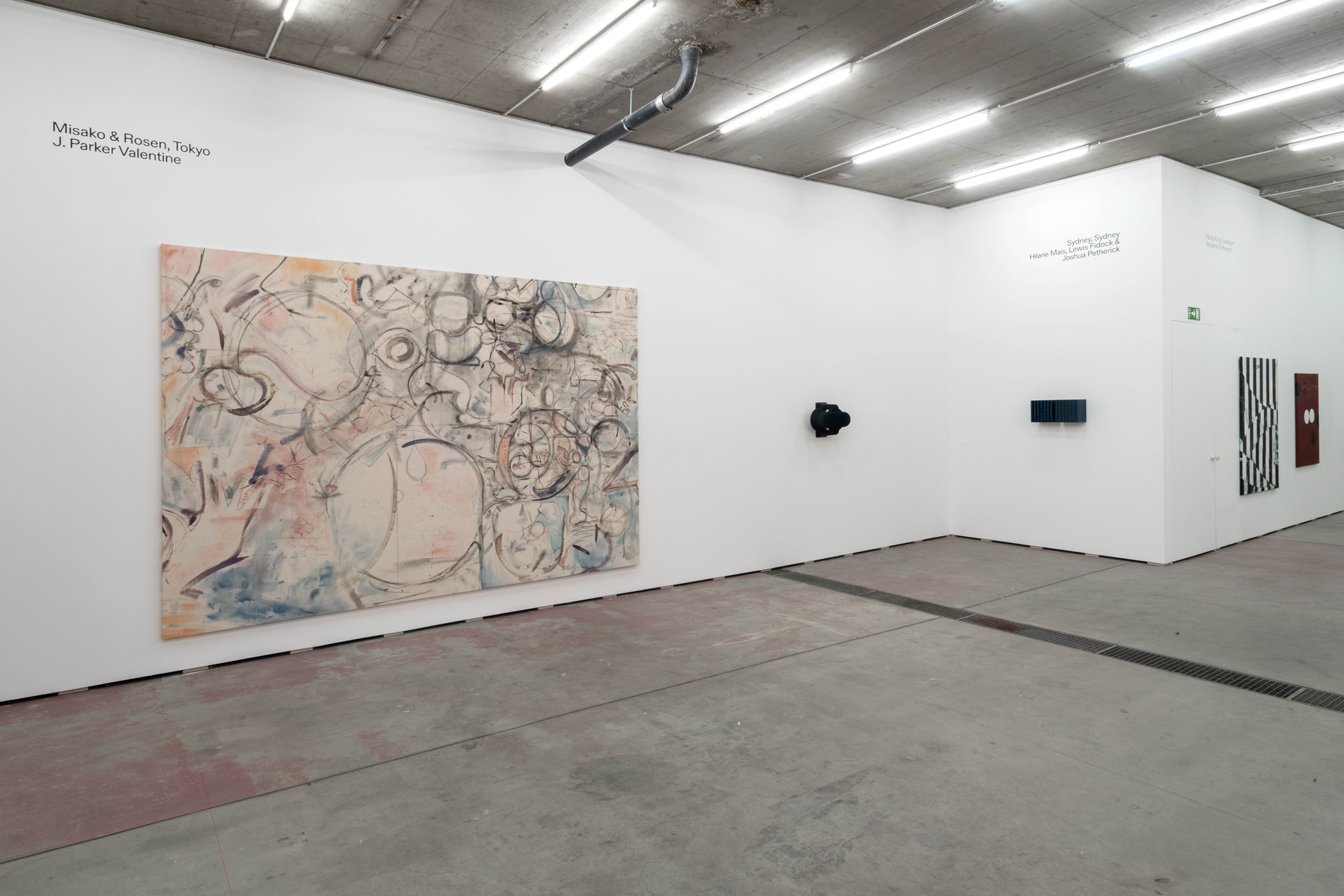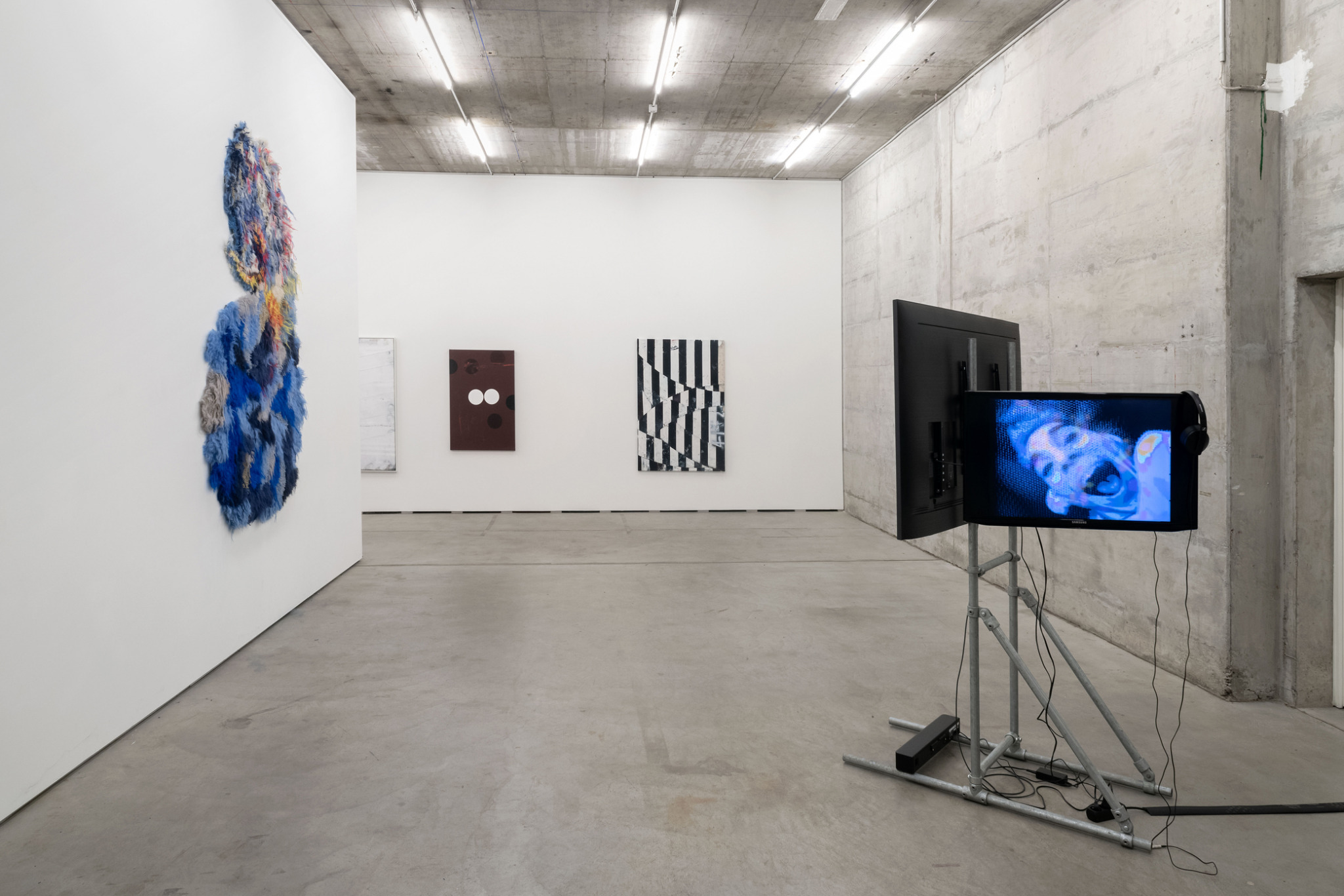Four picks from June Art Fair 2022
What we enjoyed the most at June Art Fair, the youngest and most up-and-coming fair to populate the Art Basel week
Two hundred meters from Messeplatz in Basel, away from sportscars, blazers and VIP services for the art world’s 1%–if not the world’s 1% –is June Art Fair, the youngest and freest of all the art fairs that populate that art market celebration called Art Basel week. June is casual, a term that, however, has little to do with the type of art on show: strong presentations by a tight selection of galleries and project spaces. This year’s edition of the fair, which is gallery-led and gallery-founded, took place in the same location of its first iteration in 2019, an underground bunker–one of those spaces so typical of doomsday-ready Switzerland–that is utilitarian but still got an edgy design from two of the most acclaimed architects alive, Herzog & de Meuron. The experience of descending the narrow and wobbly spiral staircase into a concrete cave full of artworks was nicely coupled with the refreshing beauty of an untamed garden on the ground floor, where the opening dinner, which was provided by a socially engaged organization, felt more like a summer picnic with friends than an art fair networking party. From its graphic design to its selection of galleries, this year’s June confirmed it is for the up-and-coming niche within the niche. Here are our highlights.
Yannic Joray at Sentiment
At Sentiment, a nonprofit organization founded in 2020 in Zurich by Olga Generalova and Philémon Otth, three sculptures by Swiss artist Yannic Joray (1988) invited us to reflect on an extraordinarily important issue. In order to talk about propaganda and information, the artist has reproduced to scale the first antennas of Radio Free Europe/Radio Liberty, the story of which was then explored in depth in the text accompanying the presentation. Alongside the antennas, Joray placed a pair of molar teeth that evoke one of the many dark events associated with the Cold War. Someone thought they could control individuals by inserting micro repeaters into their teeth, perhaps without their knowledge.

J. Parker Valentine at Misako & Rosen
Possibly one of the most established artists at June, the American J. Parker Valentine (born 1980, US) was featured in the minimal presentation of Tokyo-based Misako & Rosen; the gallery only took a new monumental Valentine painting to June Art Fair, occupying a large part of the left-hand side wall of the fair’s main space. The powerful work perfectly exemplifies Valentine’s practice and its relationship to drawing–marks are rapidly executed and unusually scattered for a picture on canvas. The association with free jazz comes easy, recalling musical improvisation where forms and moments of clearer sense, figuration even, pop up in the middle of painted attempts in the composition of her picture–the stage of trial and error is as important as the final result in Valentine’s painting.

Hilaire Mais at Sydney
British-born Hilaire Mais might be little known outside her adopted country of Australia, where, five years ago, a retrospective at the Museum of Contemporary Art in Sydney celebrated her with a presentation of 20 major works spanning 10 years of her career. Conor O’Shea, founder of the gallery and project space Sydney, chose to present one of Mais’s sculptures from 2002 at June; two painted wooden and box-looking pieces that attest to the artist’s long relationship with the grid. Departing from various 20th century traditions of abstract and minimal sculpture, Mais’s two works are remarkable for their intriguing color combination that suggests night hues, and detailed use of screws. Sydney’s presentation at June Art Fair also comprised a sculpture by duo Lewis Fidock & Joshua Petherick, which fruitfully entered into a dialogue with the neighboring Mais works and the big Valentine painting at Misako & Rosen next door–no other parts of the fair better describes June’s proximity to an orchestrated group exhibition, away from the system of booths.

Rebecca Allen at Arcade
Rebecca Allen is a pioneer of digital video art. She has been working with CGI, virtual reality and artificial intelligence in visual arts since the 1970s, exploring uncharted technological territories without receiving the recognition she deserves. At June Art Fair, London and Brussels-based gallery Arcade presented some of her early video works on flatscreens. Among them is Steady State, 1989, a study on the body movements and inner journey of a male and female figure rendered through real people and virtual shapes mimicking them. Entirely computer generated, Creation Myth, 1985, was commissioned for the opening of the Palladium, a large-scale New York nightclub that also featured artists such as Francesco Clemente, Jean-Michel Basquiat, Keith Haring, Kenny Scharf, Laurie Anderson and Arata Isozaki. The video describes the birth of a new fractal environment, which turns into a tree dancing to proper 80s disco music by Carter Burwell.

October 5, 2022
